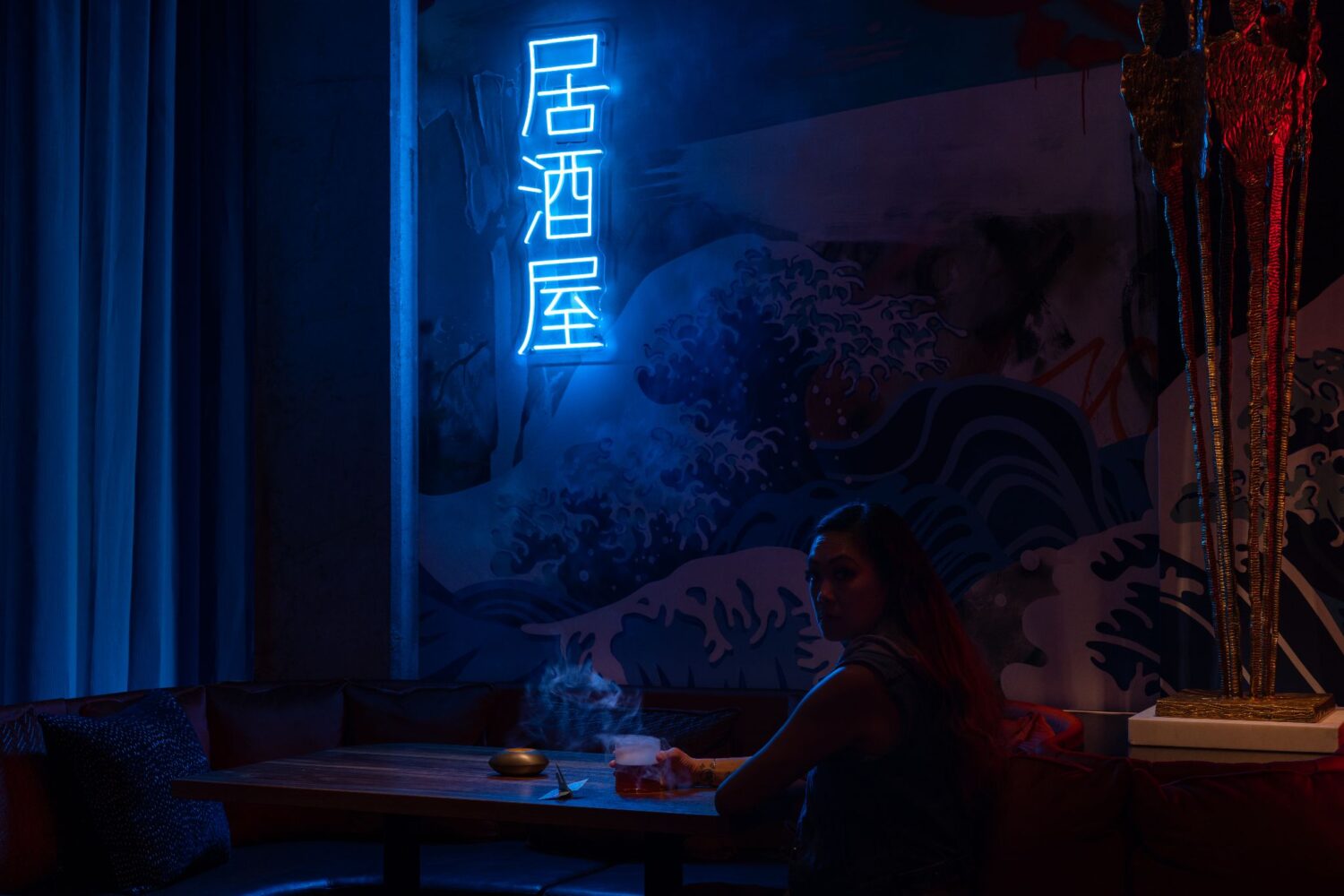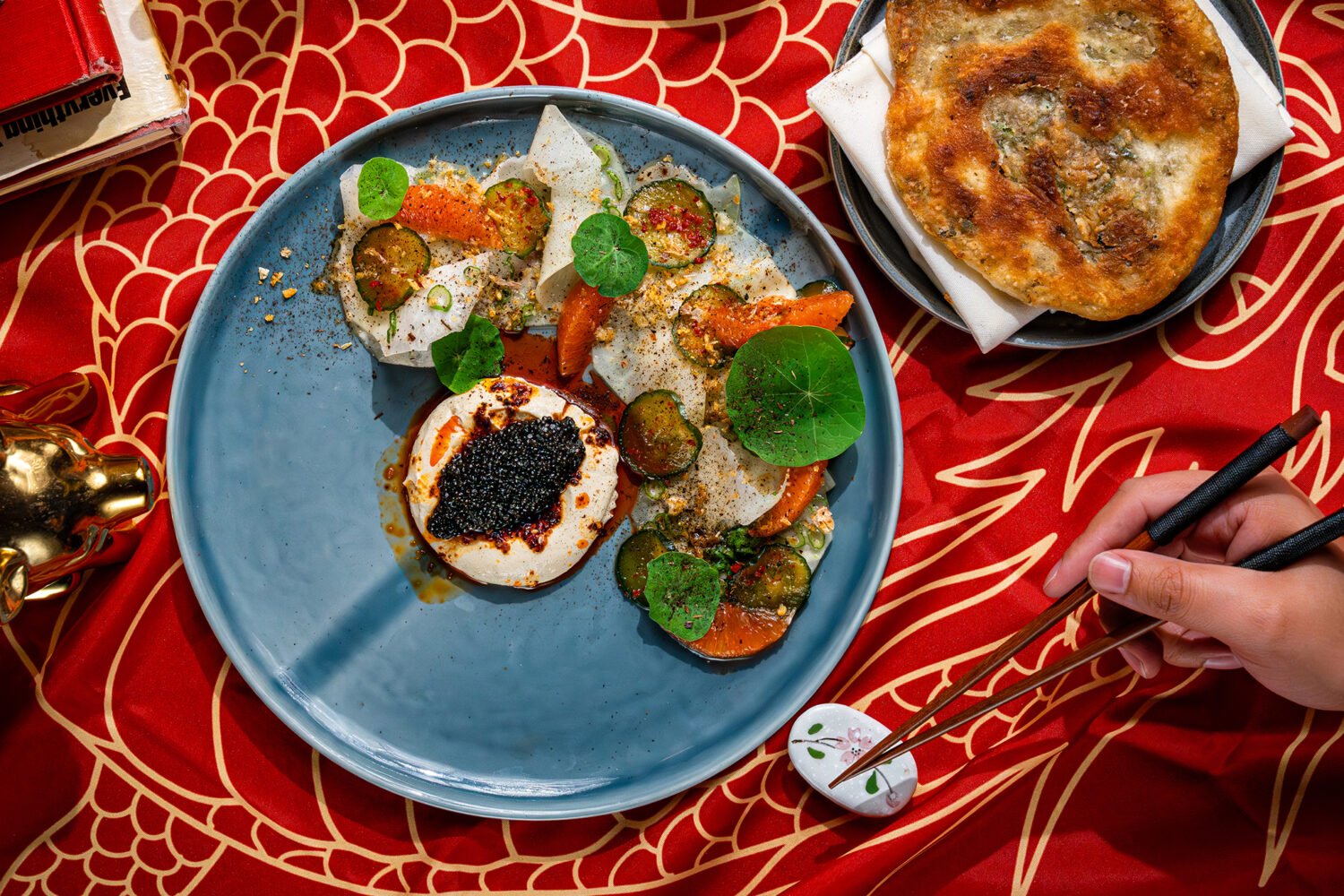The March 2017 issue of Bon Appétit magazine features two familiar faces on the cover: Bad Saint servers Shaheen Qureshi and Amanda Carpenter—plus a short personal essay inside from the Filipino restaurant’s co-owner, Genevieve Villamora. The Columbia Heights eatery is certainly popular with the magazine; it ranked second on its 2016 list of the best new restaurants in America. This time the cover feature is less a celebration of good food, and more the people behind it.
In “Generation Next,” Bon Appétit explores the now-politically charged issue of immigrants in America—and how they’ve made our restaurant scene better than ever. We spoke with editor-in-chief Adam Rapoport (and former Washingtonian intern circa 1989!) about what makes American restaurants great, A Day Without Immigrants protests, and what the Trump administration means for DC’s restaurants.
How and when did you conceive this cover feature, Generation Next?
By October we wanted to do something. What was so interesting about this election was that there was this hostility and vitriol pointed at immigrants and immigration. I didn’t get it, especially living in a city like New York and loving food. If you love food in America, you love the diversity and dynamism of the scene. You realize that’s because of immigrants. America’s food is not all about tradition and tried-and-true recipes. It’s about this constant influx of new flavors coming into this country, and both appreciating those flavors and dishes, and finding a way to reinvent them and riff on them in an American way. That’s American ingenuity—we’re constantly finding ways to take something and put a new spin on it.
In my mind, it was a way to comment about what was going on culturally in America without being explicitly political. Instead of being angry or negative, I wanted to celebrate what makes this country so great when it comes to food. So many of our favorite restaurants are being run by the children of immigrants. These are kids who grew up with immigrant parents who were cooking them traditional Russian or Thai or Filipino food. They’re modernizing what they grew up eating, and reinventing it in a uniquely American way. The food you get at Bad Saint, you’re not going to find in the Philippines. It’s very much their thing, and they’re cool with that. You talk to [owner] Genevieve [Villamora] and she’s like, ‘We’re not trying be authentic. We’re trying to lovingly appreciate the food we grew up eating, but do it our way.’ That goes back to chefs like Mario Batali presenting his interpretation of Italian food. Mario Batali’s Italian cooking is one-of-a-kind, and only in America.
Was there ever any concern about alienating certain readers? The feature doesn’t have a direct political message, but there’s an undertone.
Are we talking readers who might support the Muslim ban? [Yes] First of all, we had the chefs and restaurateurs tell their stories. It’s not like the editors of Bon Appétit are delivering a message to you. This was their coming-of-age tales. A lot of them are very sentimental, and none of them were overtly political. That’s what annoys readers—and understandably so—when they say ‘I don’t buy a food magazine to read about politics.’ I totally get that, regardless of what side of the spectrum you’re on. I didn’t want to get political, I wanted to get personal. So yes, there’s an implicit message there, but we never wanted to hammer the reader over the head with it. It’s a much more understated.
Undocumented workers are a big part of the American restaurant industry. Was there ever talk of celebrating those voices too?
I was hesitant to wade into the issues of immigration policy and legality. I don’t think we’re in a position of authority, and it’s not our strength. You still have to service your reader every month, and give them what they want in a way that surprises them…but it still needs to make sense within the purview of what you do. What we do is give people great food, beautiful photography, interesting stories, fun design.
Where we did get involved a bit more with that is this event series, Family Meal, which we’ve been doing since late November, after the election. Two of our editors had the idea of starting a series of benefit dinners at restaurants where all proceeds would go to groups that support immigrant worker rights. We called it Family Meal after the meal that the staff shares before a service begins, made by a rotating cast of line cooks. Its often the food they grew up eating. We thought it would be fun to do a series of events where restaurants make family meal for paying guests. We’re hoping to do one in DC.

The March issue feels particularly relevant given current events, and nation-wide A Day Without Immigrants protests. What are your thoughts on the protest, and how it may impact what consumers think?
I hope people who have never thought about this before give it some thought. If you’re not in the food world you’re probably not aware what goes on under the hood. If you work in a kitchen these days, and you’re an American, you probably speak some Spanish as a chef. You work with immigrants of all types, they’re on the line—whether you’re a fine dining restaurant or at a casual Vietnamese or Mexican restaurant. Immigrants are often the backbone of the restaurant industry. I’d hope most people would know that or appreciate that. I always say food is a bipartisan thing. Everyone loves good food. And you should understand where that food comes from, and who makes it, and who serves it.
Bon Appétit has given DC a lot of love recently. What do you personally find enthralling about the city’s food, and why now?
Andrew Knowlton, our deputy editor, and Julia Kramer put together our Hot 10 list each year, and they’ve been big into DC the last few years. They have the perspective to compare it to other cities, in that they go and eat around the country. I find it fascinating in DC, looking at restaurants like Bad Saint and Rose’s Luxury and Maketto, it’s more entrepreneurial and more personal. That certainly was not the case in the ’80s. You had Duke Zeibert’s and Blackie’s House of Beef. Everything was high-end and geared toward the Capitol Hill crowd. There wasn’t this cool, accessible, young, fun, dynamic restaurant scene there is now. It reflects the change and makeup of the city itself. You really saw that under Obama in the last eight years. DC feels very current, and it’s no longer playing catch up. It’s leading the way food-wise.
The New York Times ran an interesting story during the change of administration saying DC may no longer be as cool now that the Obama years are over. What’s your perspective?
Who the hell knows, to be honest. Its so hard to speculate. I do think what’s been interesting in the 25 or so days of the Trump administration is how so many people who’re otherwise complacent have taken to the streets and mobilized across all fronts. The food world is part of that. I don’t think it’s going to be dark days for the food world. I think they’re going to use this as an opportunity to step up and speak out. Obviously people like José Andrés are first in line, and you see so many environmentally and politically active chefs getting involved. I think it may very well have the opposite effect. Restaurants will be more proactive, and get more involved than they might have otherwise.



















